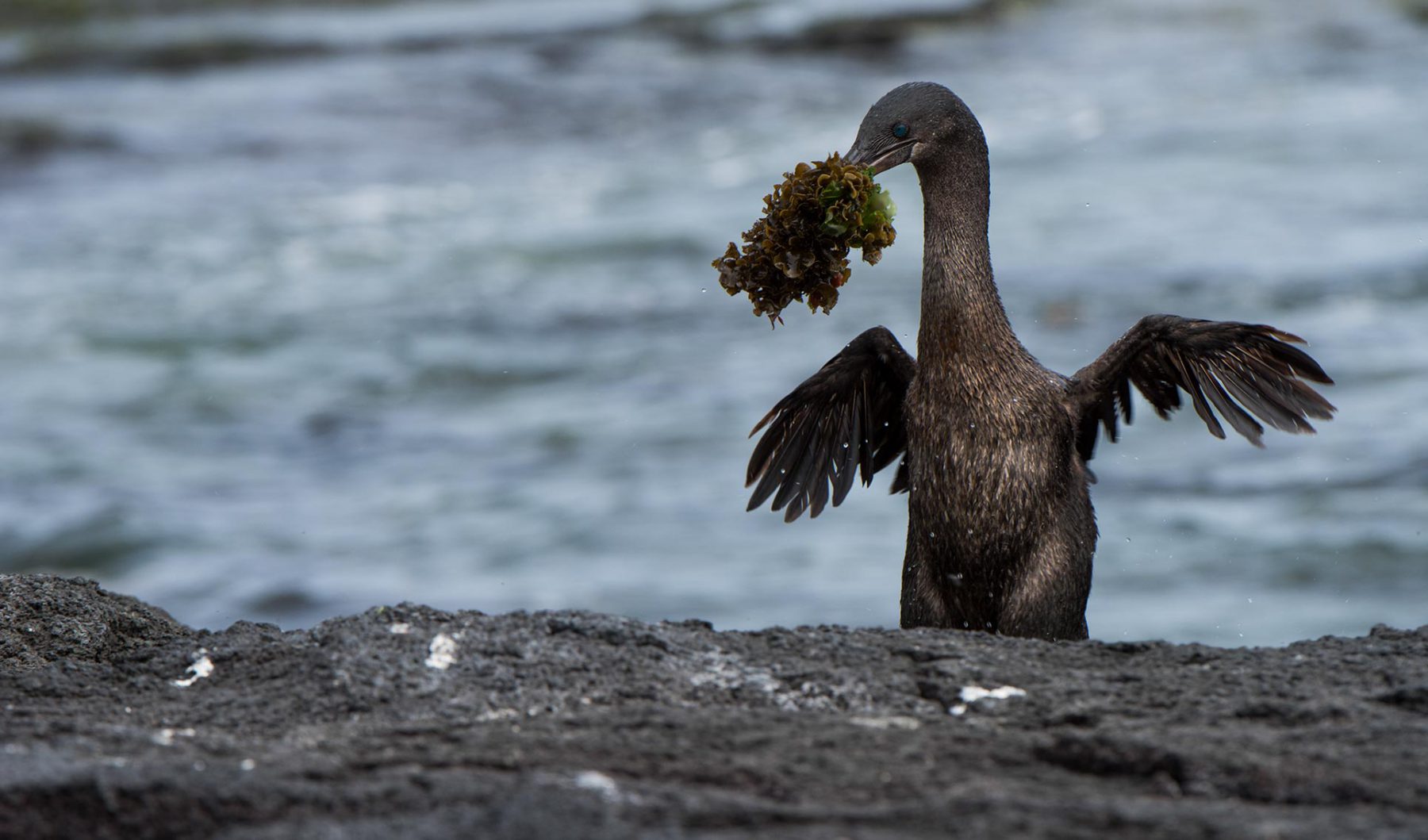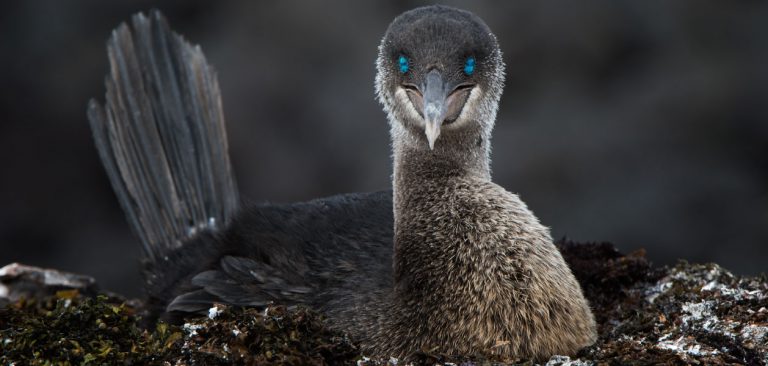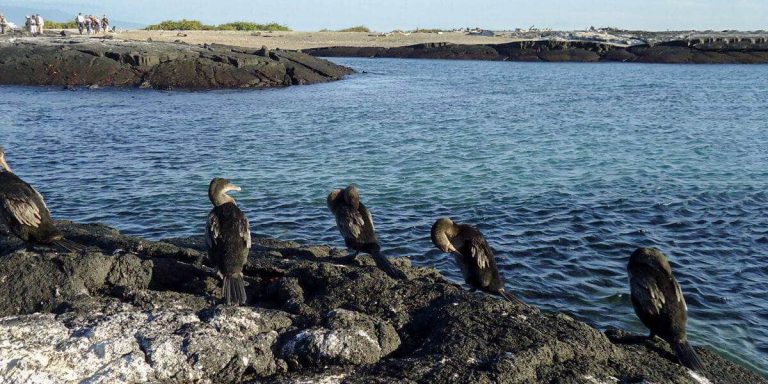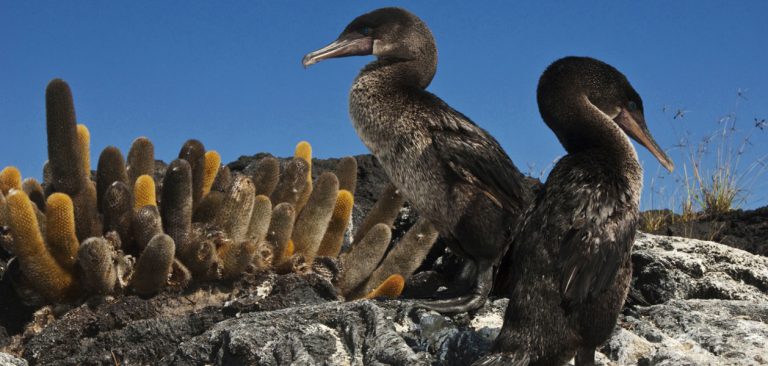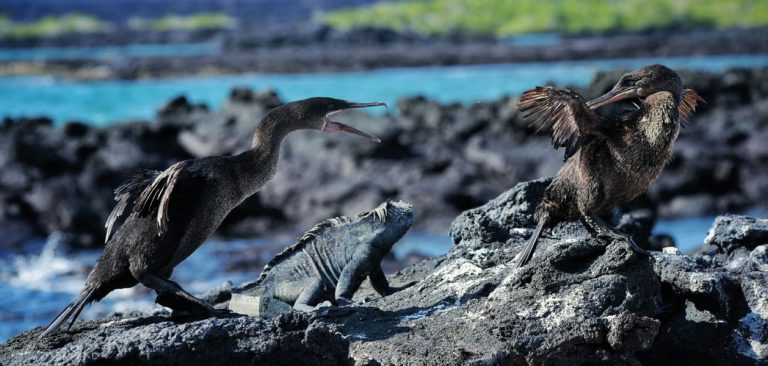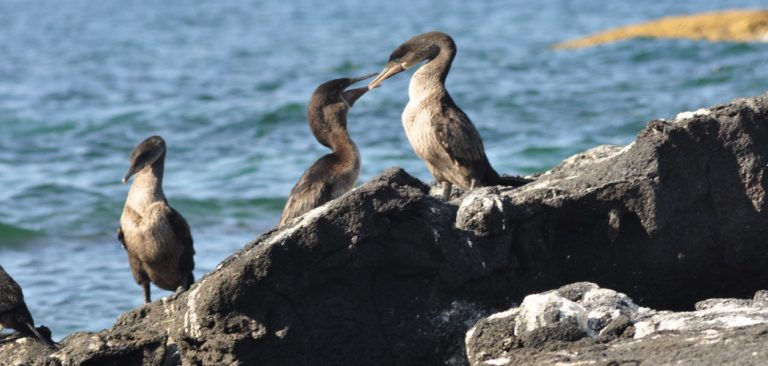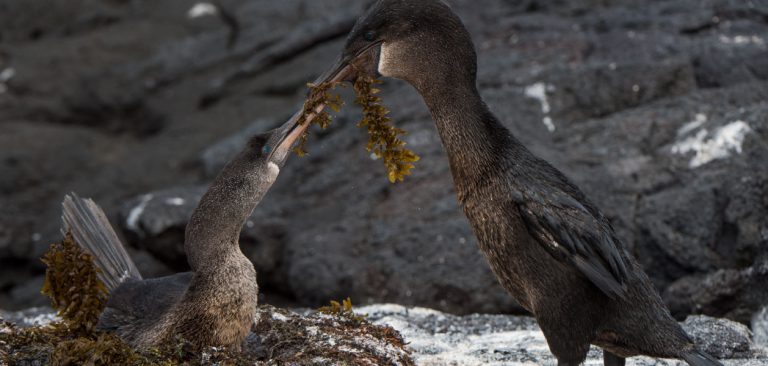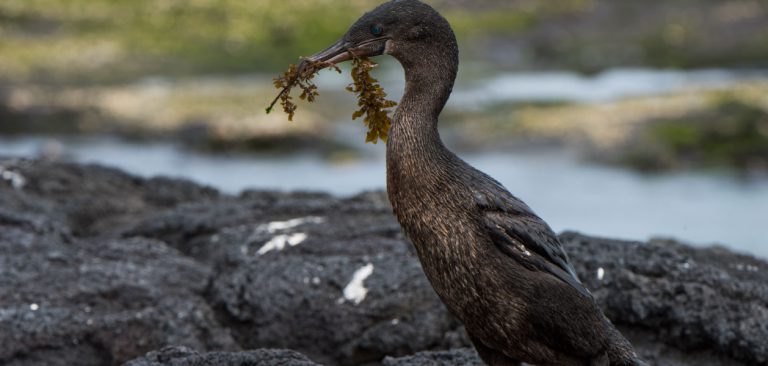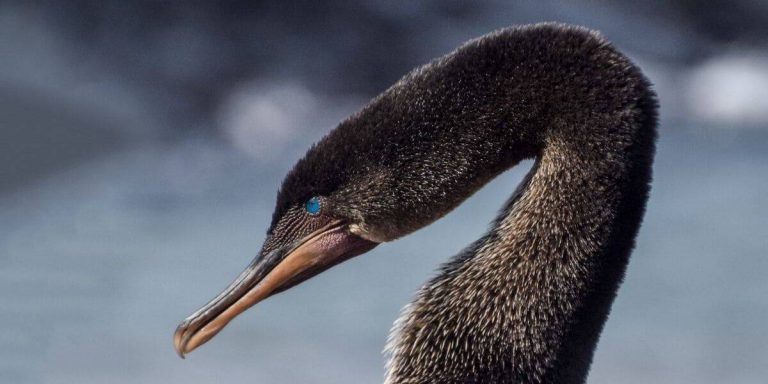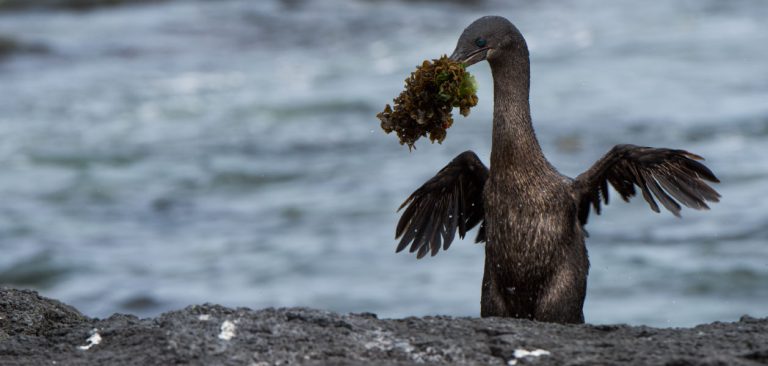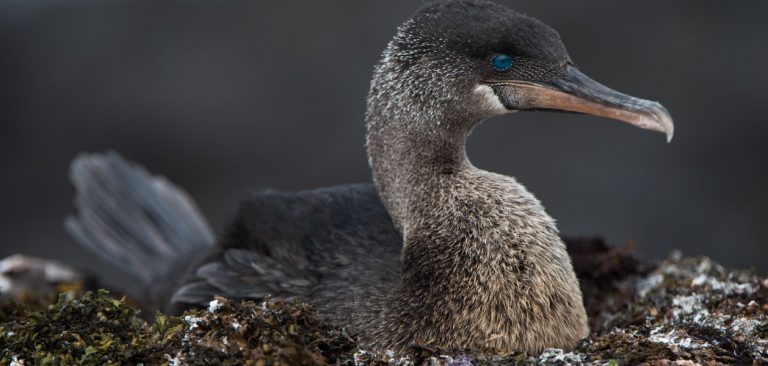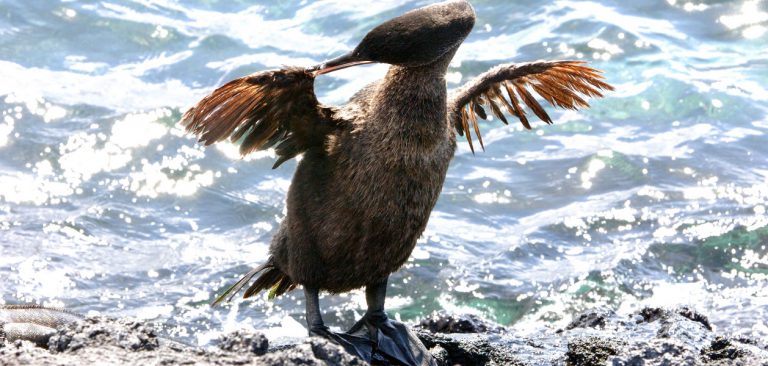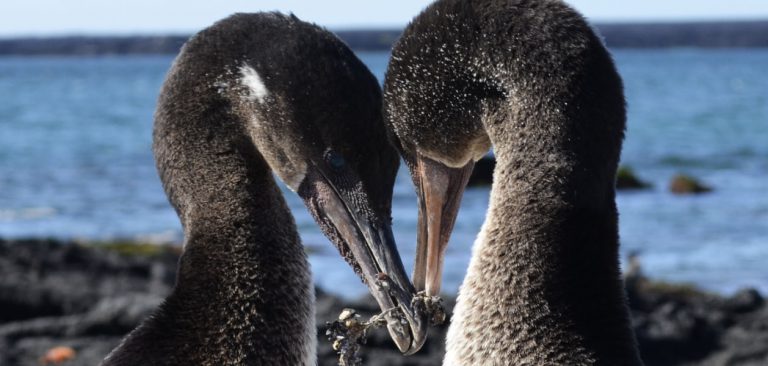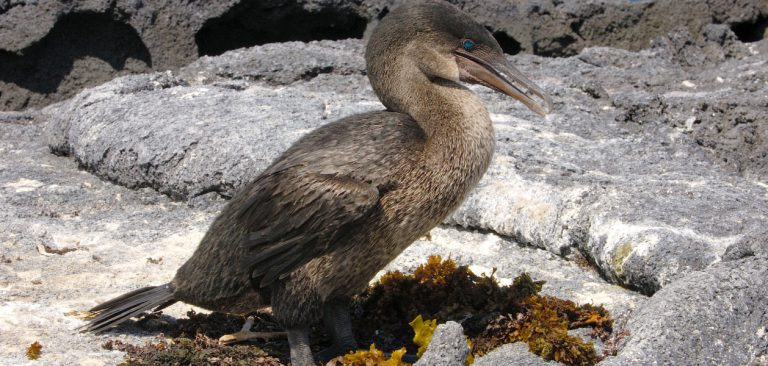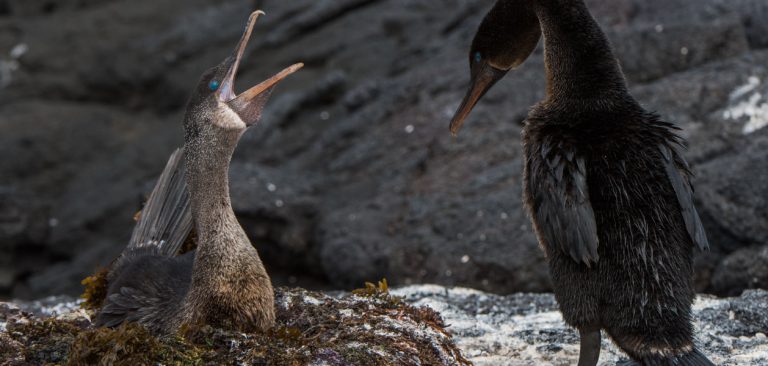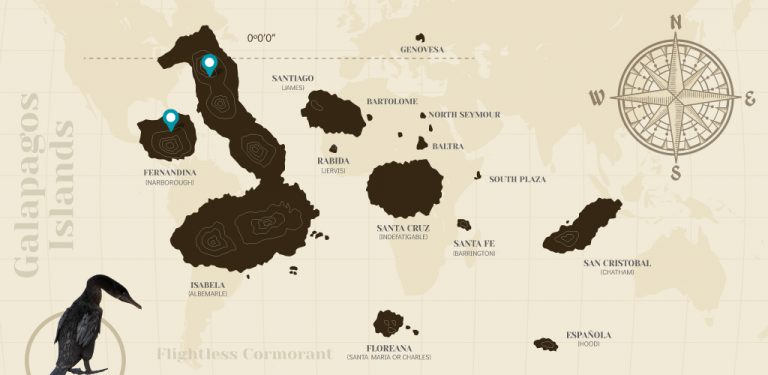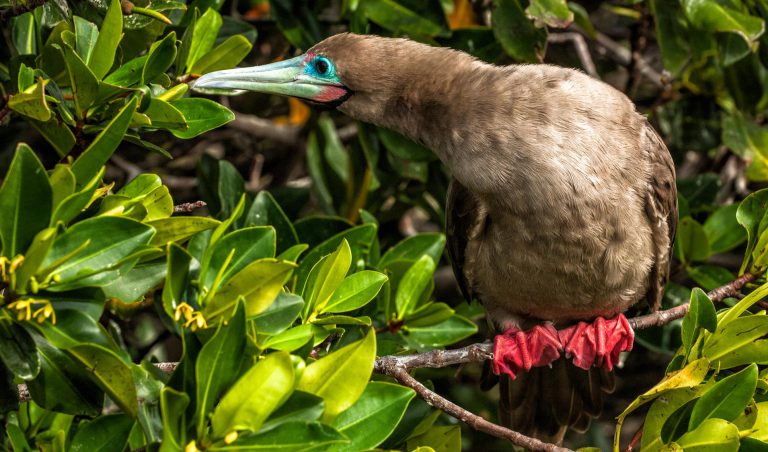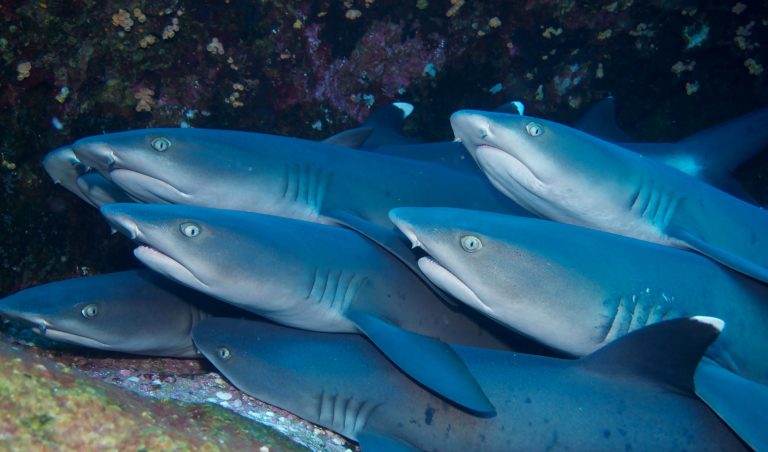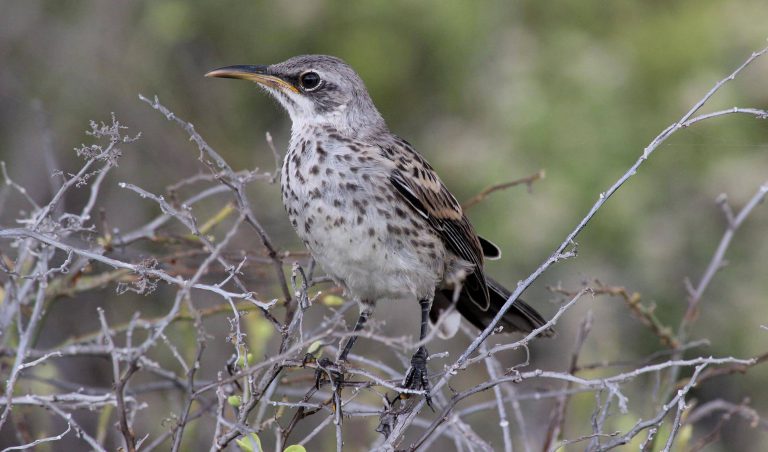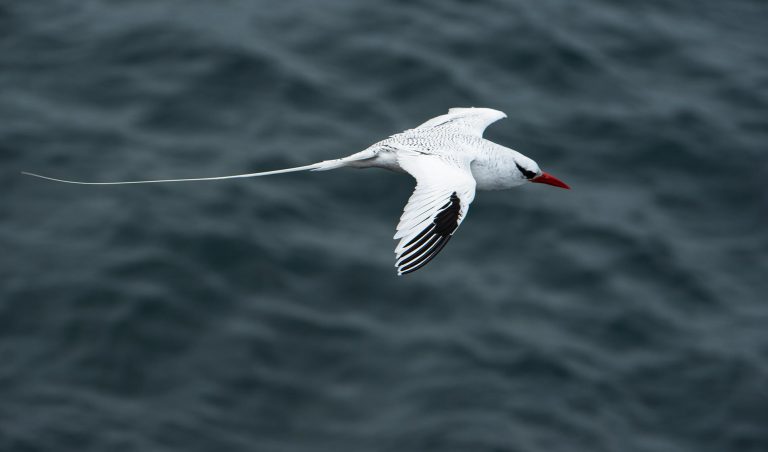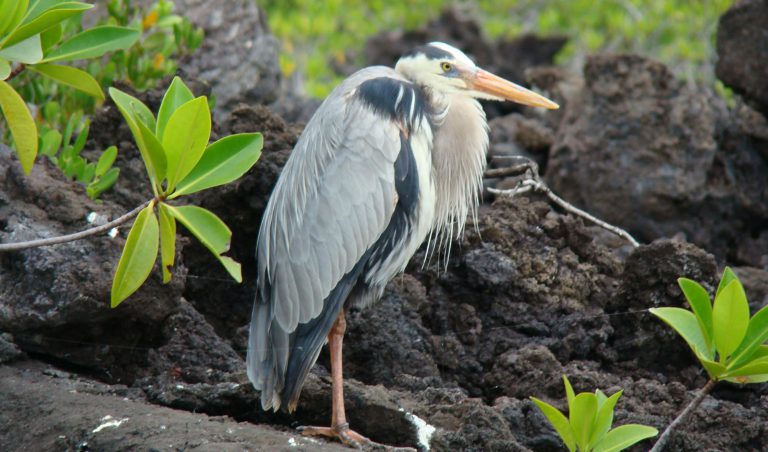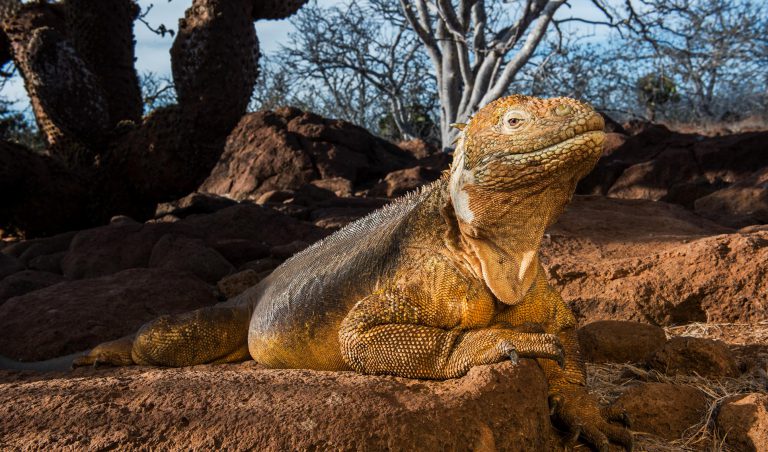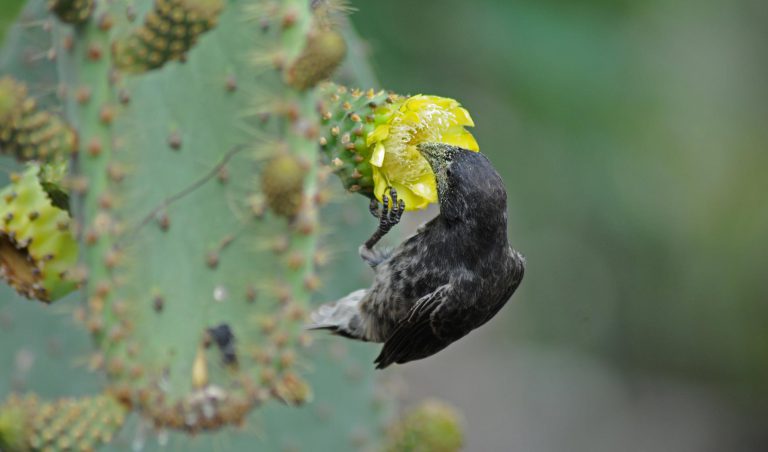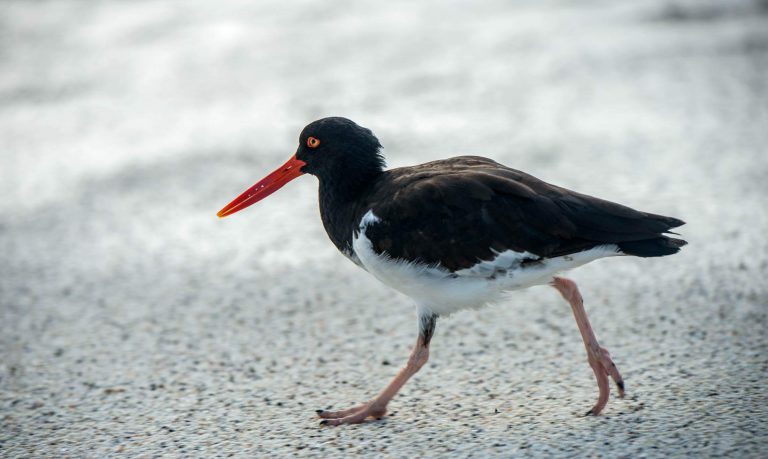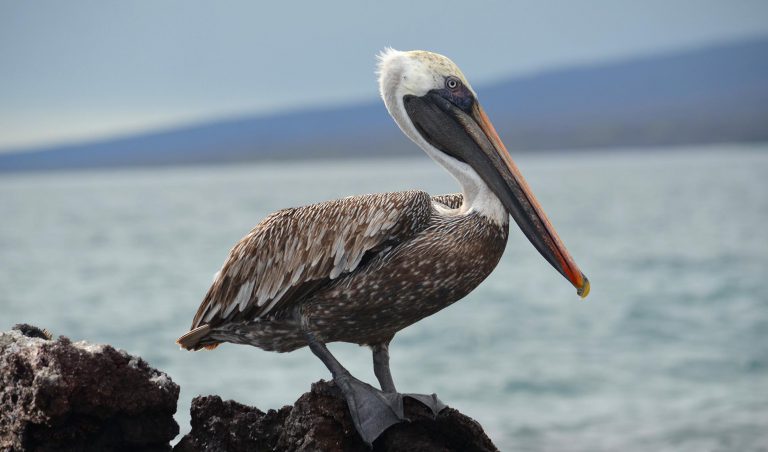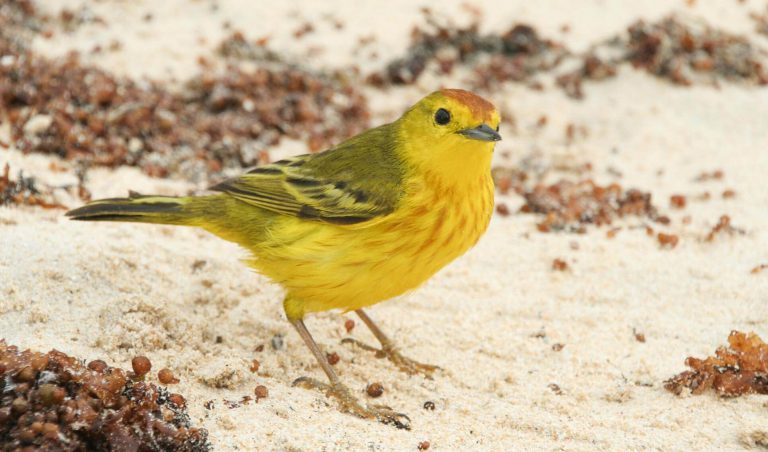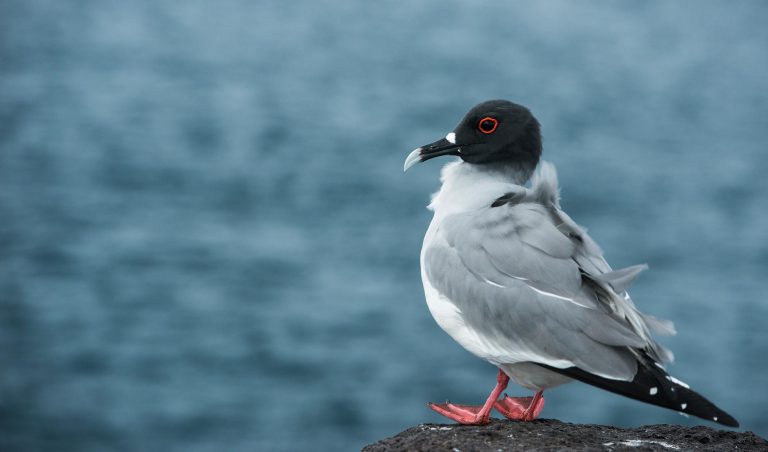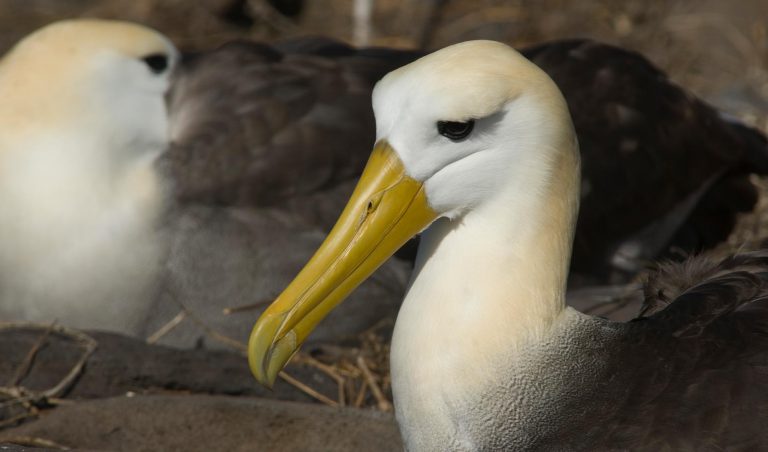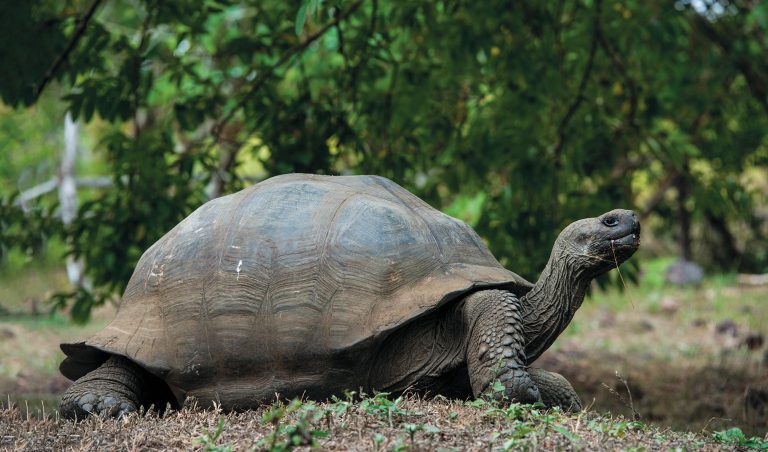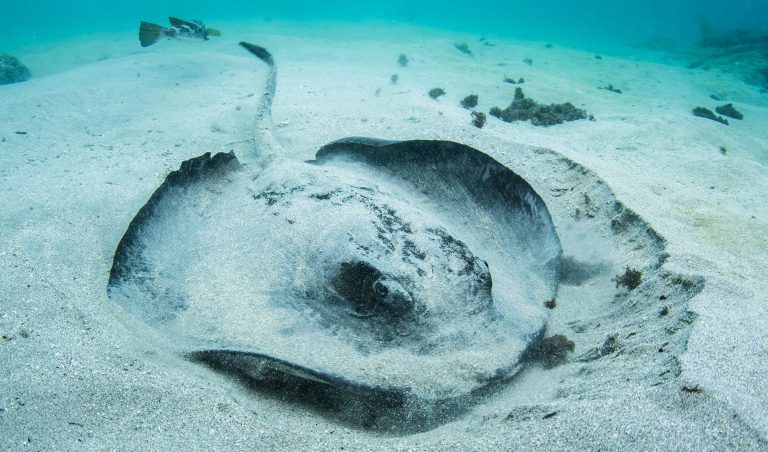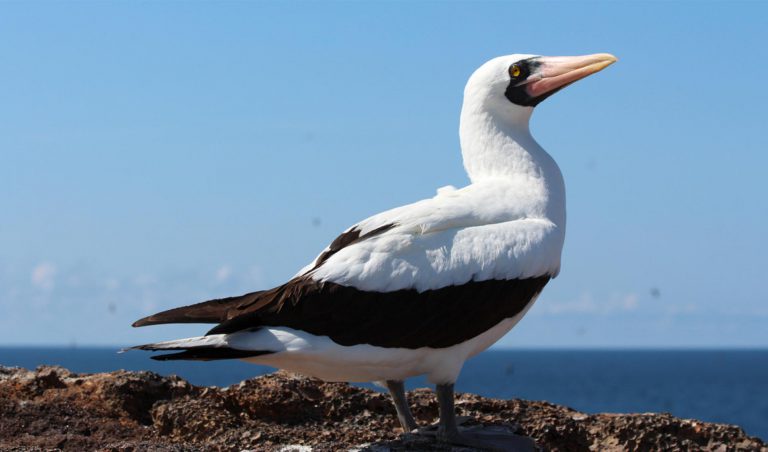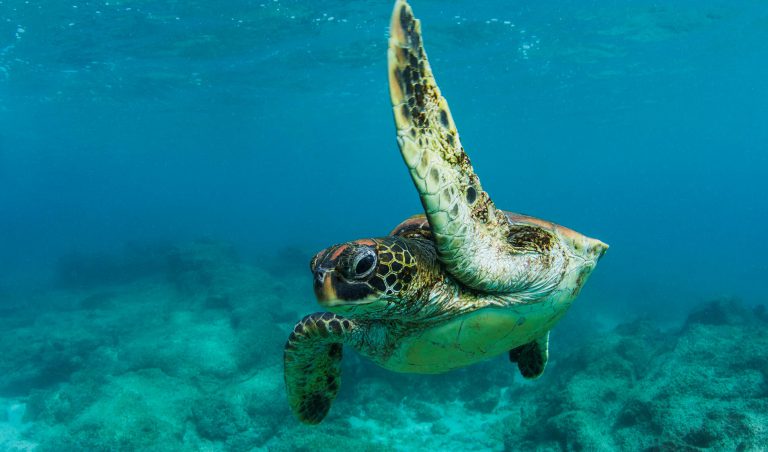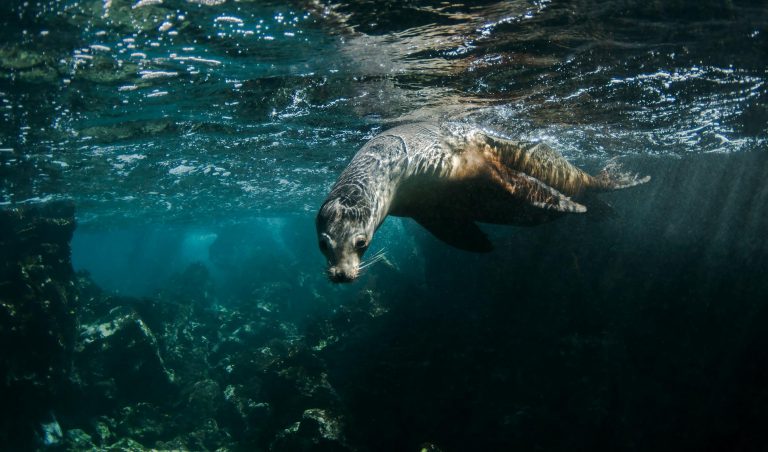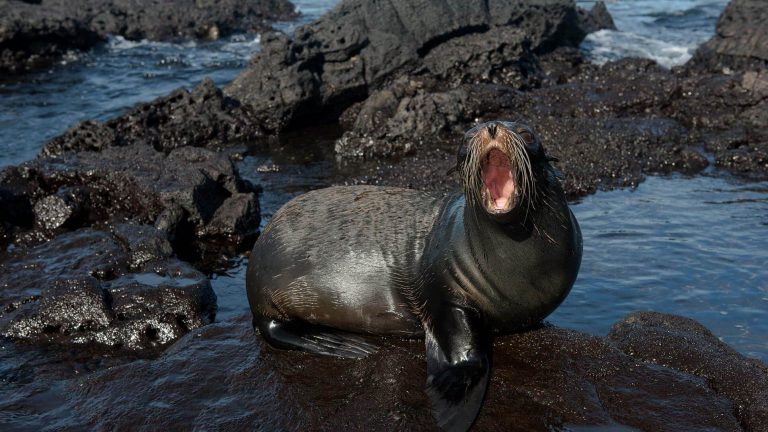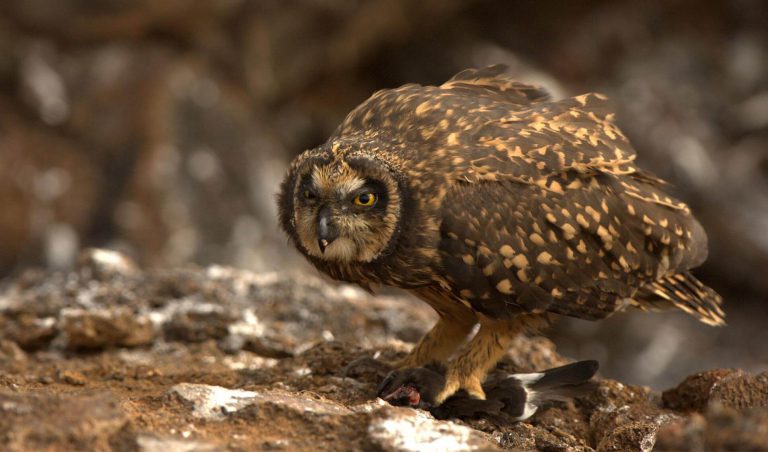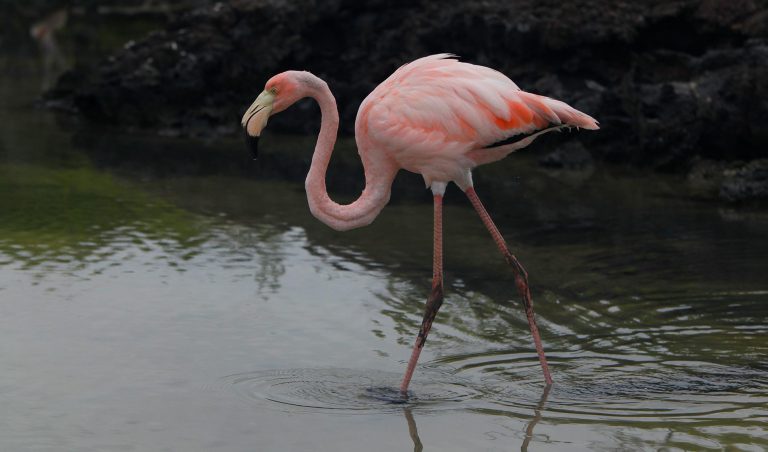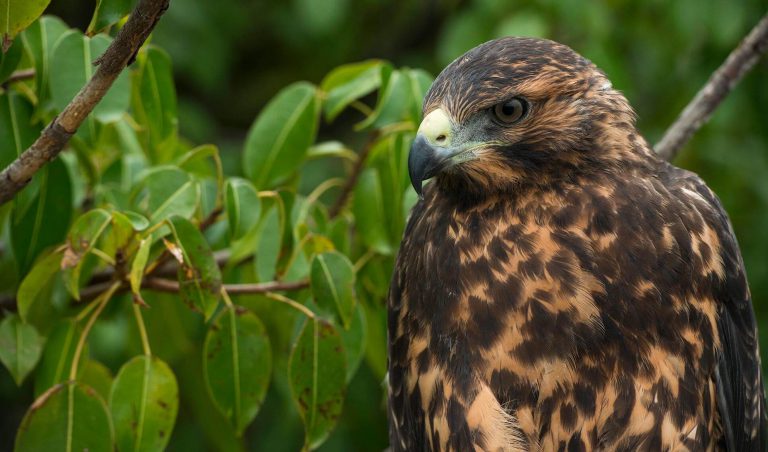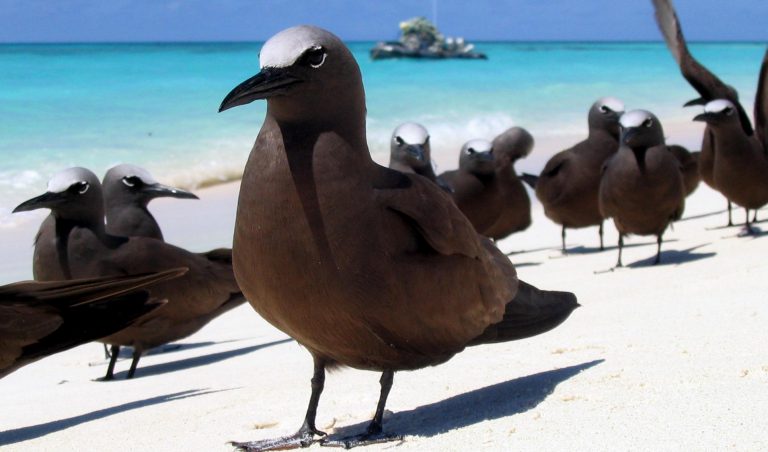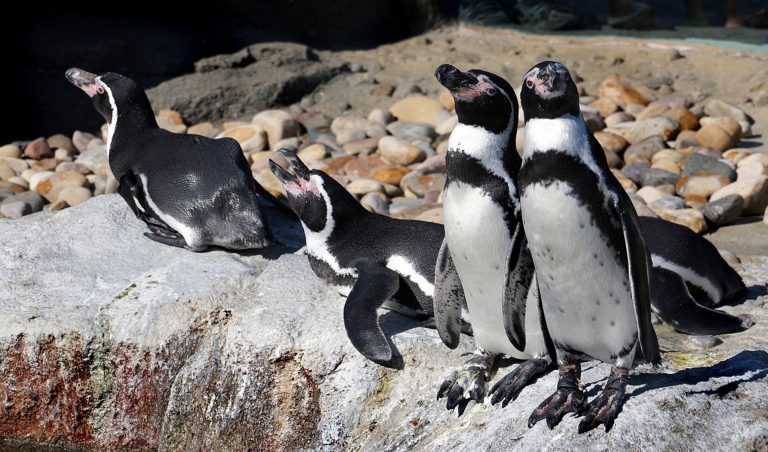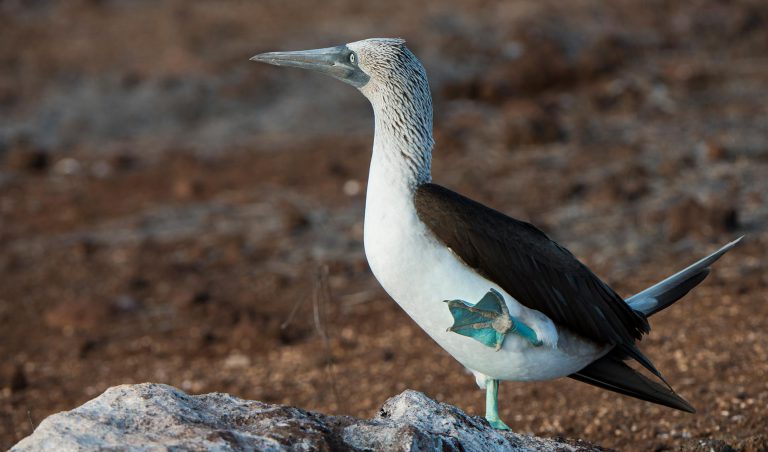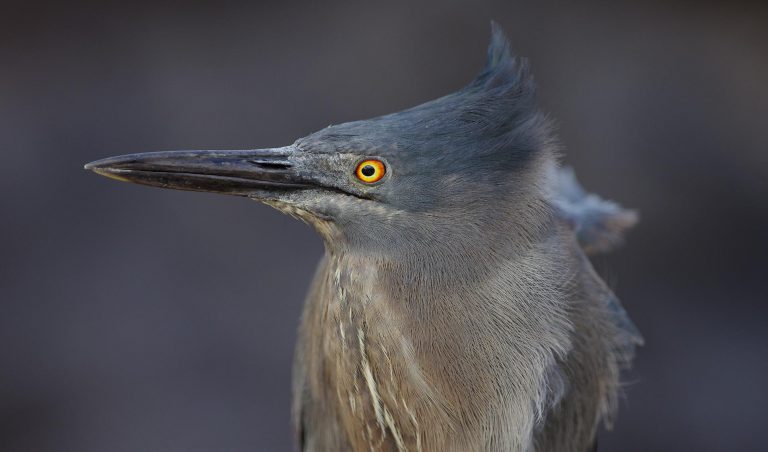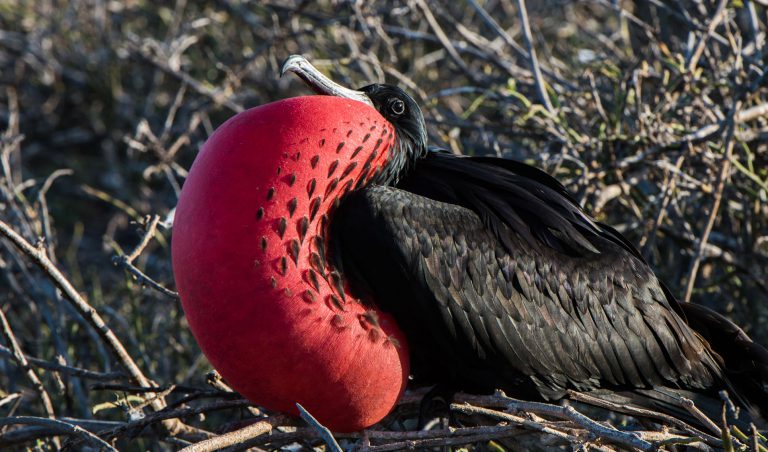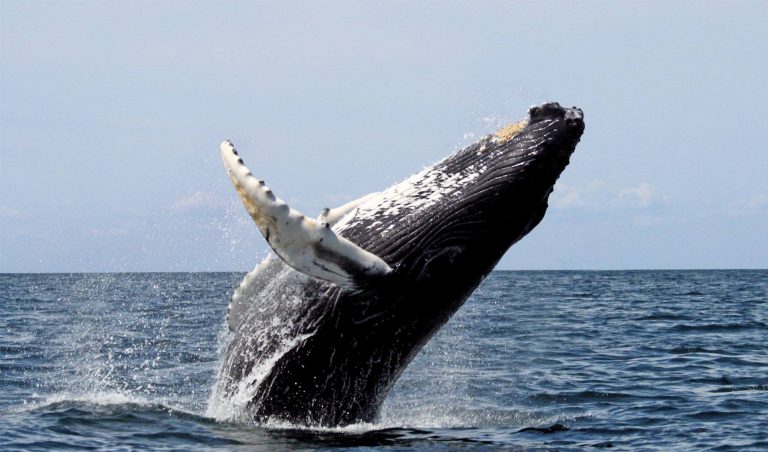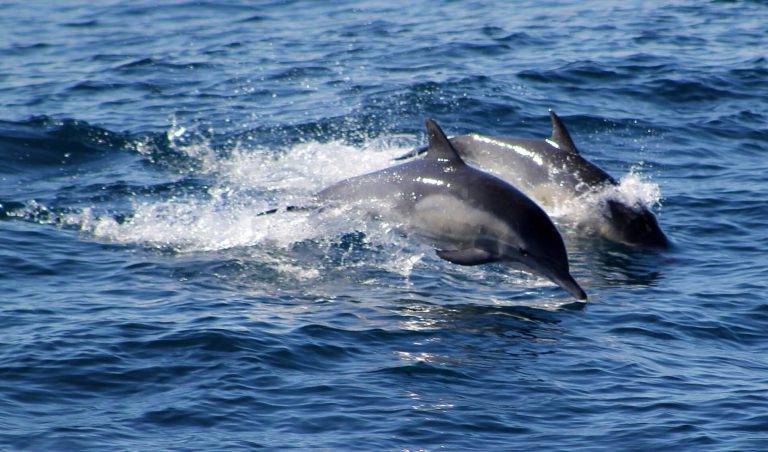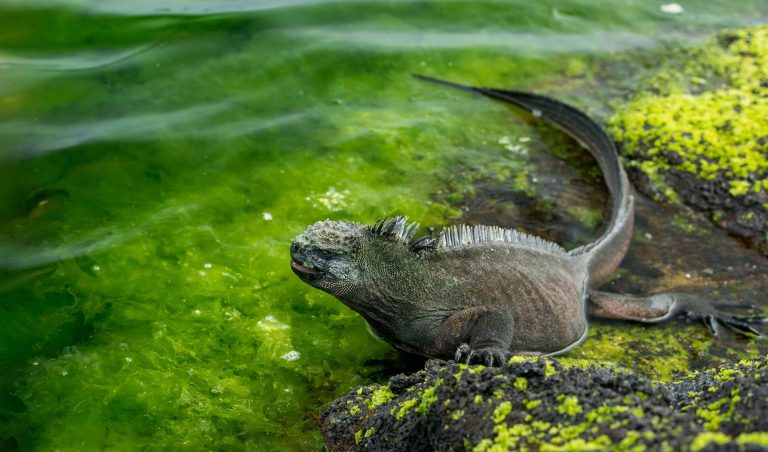This species has very strong legs and its well-adapted webbed feet for diving to seek for food. It preys on eels, small fish, and octopus and hunt in shallow waters no further than 100 meters from their nesting sites and are remarked for being sedentary.
This species had the chance to adapt to the need of feeding mainly underwater and to the absence of predators to escape from. Its wings are now one-third of the size compared to other cormorant species, and the flying muscles have adapted to a better swimming shape. They can be seen on the shoreline drying their feathers, as they produce very little wax that protects the feathers from the water, thus they need to constantly comb-dry and take care of their plumage.
Males are larger than females and their plumage is also darker with turquoise-blue eyes.
The courtship ritual starts in water when both swim around each other with they necks bends in a snake-shape and lifting from the water every now and then. The male leads the way out of the water, keeping the neck shape and they walk together in what resembles a penguin walk until reaching the perfect spot where they both start building their nest out of plants, shells, and anything that can be found in the beach.
They tend to lay 2-3 eggs but generally only one survives after hatching 35 days and reaching maturity 4 months later. Nesting occurs mainly from March to October, females have the chance to breed around 3 times a year.
There are less than 1,200 cormorants in the archipelago today, with a lifespan of around 13 years.
